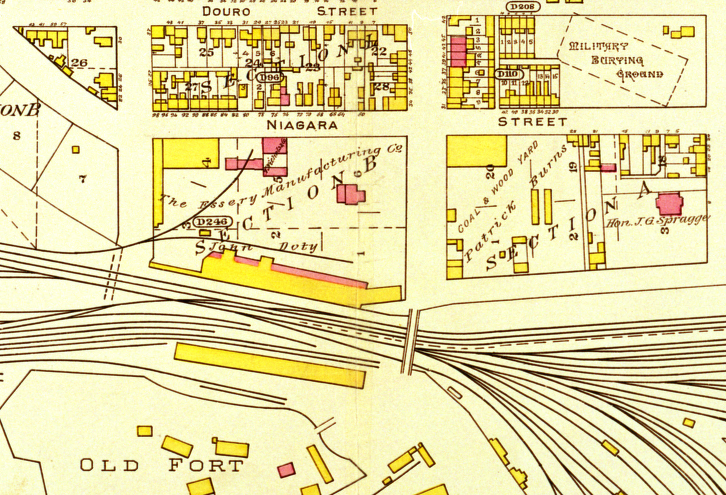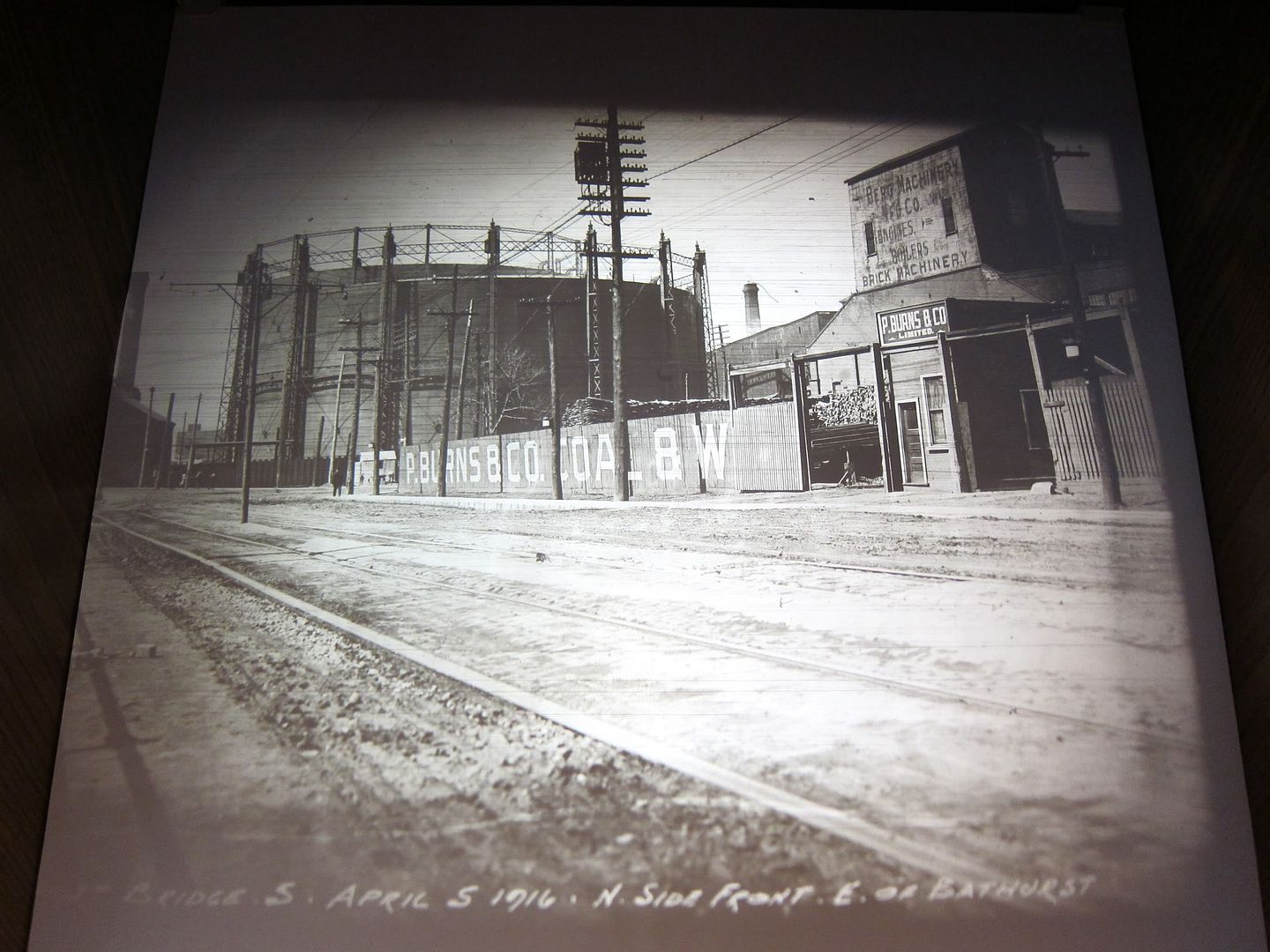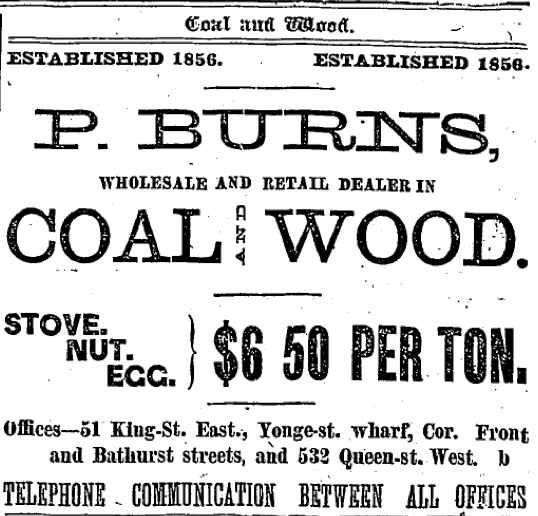 |
| Patrick Burns advertisement, Globe Dec 10, 1881 |
Coal was often imported by ship from Pennsylvania, and consequently, coal-fired, steam-powered industrial operations tended to concentrate on the Toronto waterfront or along rail corridors to reduce transportation costs. The Burns coal yard at Front and Bathurst was ideally situated for ready access to both modes of transport. It was one of six yards that Burns operated around the city.
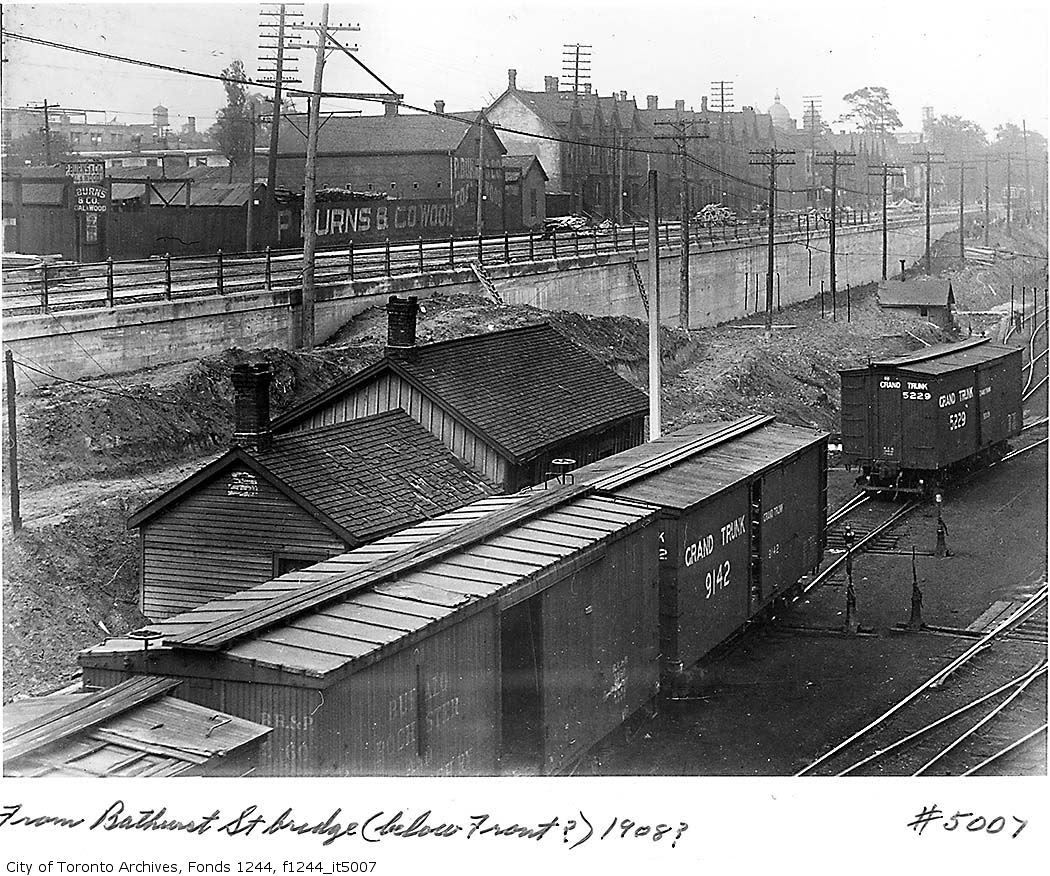 |
| Patrick Burns Coal Yard - 1908, view from Bathurst St. Bridge |
"[Burns] handles about thirty-five thousand cords of wood, and one hundred and fifty thousand tons of coal annually, and employs about three hundred men, and from one hundred and fifty to two hundred horses and carts for delivery. His wood comes to the city by all railways, and his coal both by lake and rail. He has several offices in different parts of the city for the receiving of orders, which are connected with the yard by telephone. As an instance of Mr. Burns' great success in this line of business, it is only necessary to say that at the commencement two horses were requisite for delivering purchases."
From: History of Toronto and County of York, Vol. I, 1885, by Charles Pelham Mulvany & Graeme Mercer Adam, pub. Christopher Blackett Robinson, p442.
 |
| An ad in the Nov 7, 1885 Globe for P Burns coal |
Can you find the typo? Note also the ad for the competing Elias Rogers coal shed across the street on Bathurst's west side -- although the Rogers facility isn't shown in the 1884 Goads map, it does appear in the 1890 Goads. Rogers had an interest in several Pennsylvania coal mines, and was the city's largest fuel dealer -- he had a massive yard in the Esplanade. Rogers was a puritanical Quaker Alderman who ran for Mayor in 1887, who lost primarily due to the stunning revelation of a secret fuel-price fixing scheme. Also, it turns out that roller skates are older than you think!
In the early 1880s, coal sold by Patrick Burns cost $6.50 per ton. Premium beech and maple cords of wood cost $6 per cord - delivered to any part of the city.
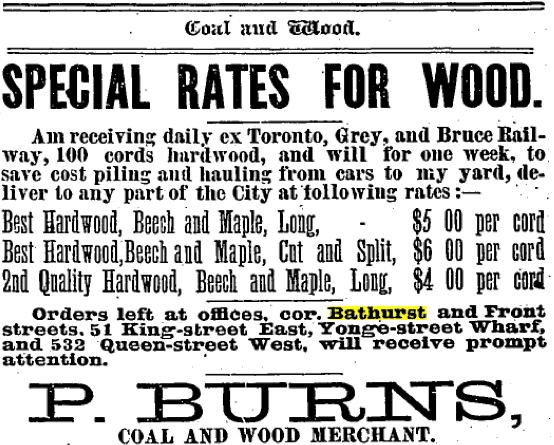 |
| An ad in the April 11, 1882 Globe |
In 1886 Burns was arrested, and charged with fraud by the City, due to a dispute over $8,000 of coal that was paid for, but allegedly never delivered. Burns had amassed considerable wealth, so the case became known as the 'Coal Conspiracy Case', with allegations of payoffs, municipal corruption, conspiracies, and accounting trickery. The case occupied many column-inches in the papers of the fall of 1886.
"I'm blest if I know."
- Patrick Burns, when asked why he had been arrested.
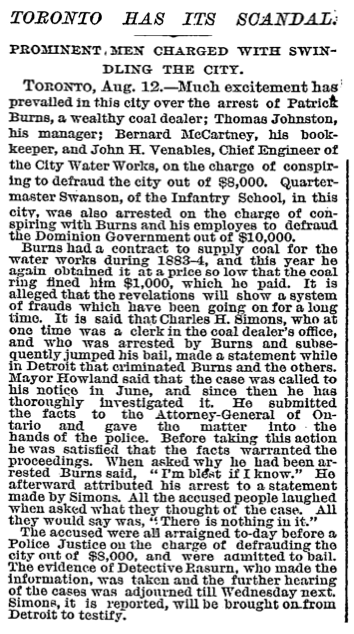 |
| New York Times Aug 13, 1886 |
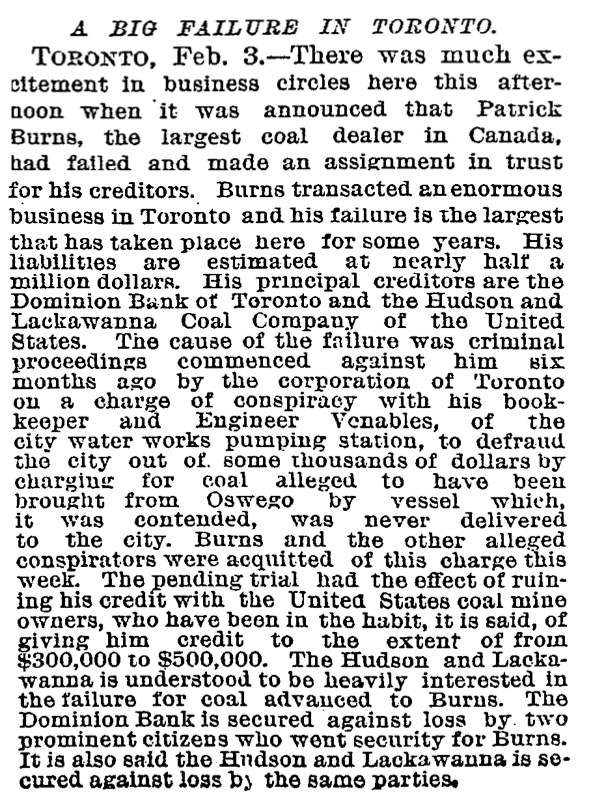 |
| New York Times Feb. 4, 1887 |
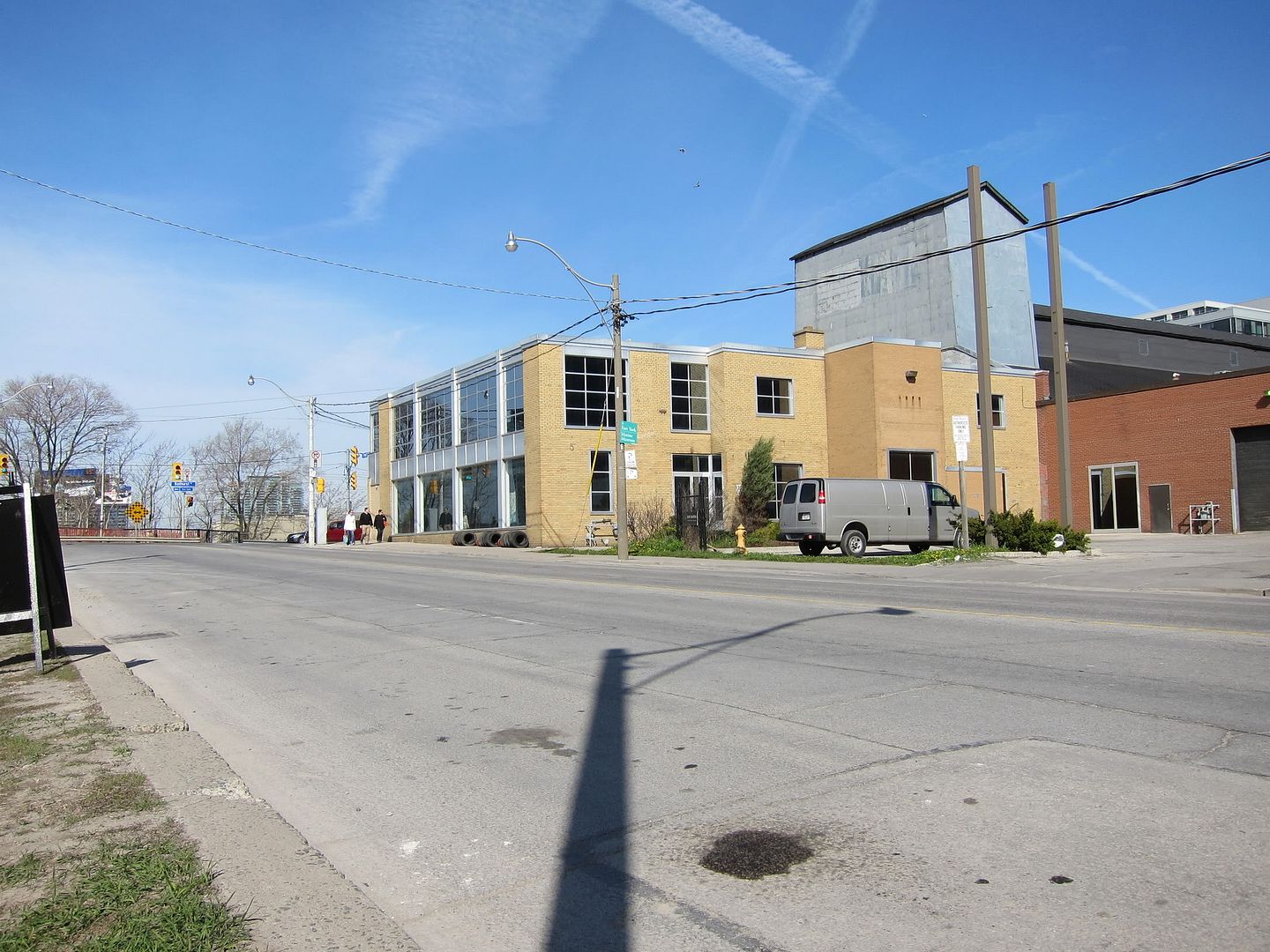 |
| Perspective in June 2011 |
Despite Burns' difficulties, the coal yard nevertheless operated under the Burns name for many years (at least until 1924, as photographs show), sharing the lot at Front and Bathurst with several other businesses. The widespread use and advance of electric power from Niagara Falls and natural gas in the 1900s (over local coal-powered generators) doubtless impacted the industry adversely. Coal nevertheless remained a major source of Toronto residential and business heating until the 1950s.
The next occupant of Front and Bathurst was John Doty: an emblematic Victorian story of success, ambition and failure.
Read the next section:
You're reading: Farewell to Rock Oasis, the secret history of my home climbing gym.
Table of Contents
Like, Share, or Comment on this post!

